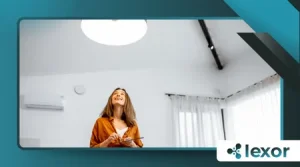How to Set Up a Smart Home on a Budget

The dream of a fully automated home no longer requires a fortune. With strategic planning, you can set up a smart home on a budget while maintaining functionality, security, and even a touch of luxury.
Gone are the days when smart homes were exclusive to tech elites.
Today, thanks to competitive pricing, open standards like Matter, and a thriving second-hand market, even renters and frugal homeowners can enjoy automation.
But where do you start? And how do you avoid wasting money on unnecessary gadgets? This guide breaks down every step—proven, practical, and penny-wise.
Why Smart Homes Are Now More Accessible Than Ever
Advancements in IoT technology have drastically reduced costs. A 2024 Statista report revealed that 42% of U.S. households now use at least one smart device, up from 28% in 2022.
This surge isn’t just due to lower prices—it’s also because setup has become simpler. Many devices now support plug-and-play installation, eliminating the need for professional help.
Manufacturers are also prioritizing compatibility. Matter, the universal smart home standard, ensures devices from different brands work seamlessly together, preventing costly ecosystem lock-in.
Start With a Solid Foundation: The Hub
A central hub streamlines control. Devices like Amazon Echo Dot (4th Gen) or Google Nest Mini offer affordability without compromising performance.
But why a hub? Think of it as the brain of your smart home. Instead of juggling multiple apps, a single interface manages lights, locks, and thermostats with voice or a tap.
++Crypto Mining Explained: Is It Still Worth It?
For renters, portable hubs like the Echo Dot make sense—no wiring, no permanent changes.
Homeowners might prefer a more robust option, like the Samsung SmartThings Hub, which supports Zigbee and Z-Wave for broader device compatibility.
Prioritize Essential Devices First

Not all gadgets are equal. Begin with smart plugs, which retrofit existing appliances. A $15 Kasa Smart Plug can turn any lamp into a voice-controlled fixture.
Next, consider a smart bulb for your most-used light. Brands like Wyze and Sengled offer reliable options under $20. These small upgrades deliver immediate convenience without a full-system overhaul.
++The Best Smart Home Hubs Compared
Avoid the temptation to splurge on niche devices (like smart mirrors) early on. Focus on high-impact, frequently used items first—security, lighting, and climate control.
Lighting: The Easiest Entry Point
Smart bulbs like Wyze or Philips Hue (on sale) provide ambiance and efficiency. Dimming schedules reduce energy bills—an instant return on investment.
But lighting goes beyond bulbs. Smart switches, like the Lutron Caseta, offer a more permanent solution for rooms with multiple fixtures. They’re pricier upfront but cheaper long-term than replacing every bulb.
For outdoor lighting, solar-powered options like the Ring Solar Pathlight eliminate wiring hassles. Motion-activated modes enhance security without extra sensors.
Security Doesn’t Have to Break the Bank
Affordable cameras like the Blink Mini offer HD monitoring under $35. Pair with a budget-friendly sensor from Aqara for full coverage.
But security isn’t just cameras. A smart lock, like the Yale Assure SL (often discounted), lets you ditch keys while granting timed access to guests—no locksmith needed.
++How Smart Thermostats Help You Save
For renters, adhesive sensors (like those from SimpliSafe) monitor doors/windows without drilling. They’re temporary, effective, and landlord-friendly.
Voice Assistants: The Budget Conductor
Alexa and Google Assistant remain the most cost-effective controllers. Their AI improvements in 2025 allow nuanced commands without premium hardware.
++The Future of Shopping: VR in E-Commerce
Yet, voice isn’t the only option. Apple’s HomeKit offers robust automation via the Home app, ideal for iPhone users. Even Siri can adjust lights if you own a HomePod Mini (often $80 refurbished).
For privacy-conscious users, local hubs like Home Assistant provide voice-free automation, though they require more technical setup.
The $500 Starter Pack
A user transformed their apartment with:
- Echo Dot ($50)
- 4 Wyze Bulbs ($60)
- Kasa Smart Plug ($15)
- Blink Mini ($35)
Total: $160—far below the perceived entry cost.
They added a $100 robot vacuum (eufy BoostIQ) later, automating cleaning without lifting a finger. Within months, energy savings offset 30% of their initial spend.
The DIY Security Savior
Instead of a $300 system, a homeowner combined:
- Reolink Camera ($60)
- Yale Smart Lock (refurbished, $80)
- Free Apple HomeKit for automation.
Their setup alerts them of intrusions, auto-locks doors at bedtime, and even triggers lights during motion detection—all under $200.
Energy Efficiency Pays for Itself
Smart thermostats like the Nest Thermostat E learn habits, cutting HVAC costs by 12% (Energy Star). The initial $130 outlay recoups in under a year.
But thermostats aren’t the only savers. Smart plugs with energy monitoring (like TP-Link’s Kasa) identify vampire devices—like that always-on gaming console—adding $10/month to bills.
The Used and Refurbished Market.
Certified refurbished devices from Best Buy or Amazon Renewed offer warranties at 30-50% discounts. A like-new Ecobee3 Lite for $90? Yes.
eBay is another goldmine. Many sellers offload barely-used gadgets after impulse buys. Just verify compatibility with your hub before purchasing.
Avoid Overautomation
Not every switch needs AI. Focus on high-impact areas: lighting, security, and climate. A minimalist approach prevents budget bloat.
Ask: “Does this solve a real problem?” A smart coffee maker sounds fun, but a $20 smart plug on a regular machine achieves the same “brew at sunrise” effect.
Smart home planning mirrors chess strategy. Each move (purchase) should strengthen your position (efficiency) without reckless spending.
A pawn (smart plug) can be more valuable than a knight (pricey robot vacuum) if it delivers daily utility. Prioritize moves that checkmate inefficiency.
The Hidden Costs of Cheap Gear.
Bargain-bin gadgets often lack updates, becoming security risks. Stick to reputable brands with consistent firmware support.
A no-name $10 smart bulb might stop working after a year, while a $15 Wyze bulb receives updates for 5+ years. The math favors reliability.
Routine Automation: The Silent Money Saver
Scheduling lights and thermostat slashes bills. A “Goodnight” scene that locks doors and adjusts temps takes minutes to configure.
Advanced users can leverage IFTTT or Home Assistant for custom automations, like turning on fans when humidity hits 70%—no extra hardware needed.
Question to Ponder: Do You Really Need That Fridge?
Samsung’s $4,000 smart fridge won’t outperform a $30 smart plug in ROI. Prioritize utility over novelty.
Instead, invest in a smart water leak detector ($50). It’s less glamorous but could save thousands in flood damage.
Future-Proofing on a Dime.
Choose Matter-compatible devices. This universal standard ensures longevity without costly replacements down the line.
Brands like Eve, Nanoleaf, and Aqara now offer Matter support, making them safe bets for budget-conscious buyers.
Others are also reading: Energy Star Report on Thermostat Savings
Final Tip: Patience Pays
Black Friday and Prime Day offer steep discounts. Track prices via CamelCamelCamel and buy strategically.
Local marketplaces (Facebook, OfferUp) often list unopened smart devices at 40% off retail—just meet in public spaces for safety.
Conclusion: Smart Doesn’t Mean Expensive
With savvy choices, you can set up a smart home on a budget that rivals luxury setups. Start small, scale wisely, and enjoy the future—today.
The key? Focus on value, not vanity. A $20 smart plug used daily beats a $200 gadget collecting dust.
Now, what’s your first move?
FAQs: Setting Up a Smart Home on a Budget
Q: Can I automate my home without Wi-Fi?
A: Yes! Zigbee and Z-Wave devices (like Aqara sensors) work via hubs locally, no internet required.
Q: Are refurbished smart devices reliable?
A: Certified refurbished units (Amazon Renewed, Best Buy) include warranties and are tested rigorously.
Q: What’s the cheapest way to start?
A: A $25 smart plug + free voice assistant app (Google Home) can control lamps and small appliances.
Q: Do smart homes increase electricity bills?
A: No—when optimized (e.g., scheduling lights/thermostats), they reduce energy waste by 10-15%.
Q: Can renters install smart devices?
A: Absolutely. Use adhesive sensors, plug-in cams, and portable hubs—no permanent modifications needed.
This guide proves that intelligence—not income—defines a true smart home. Ready to automate wisely?
